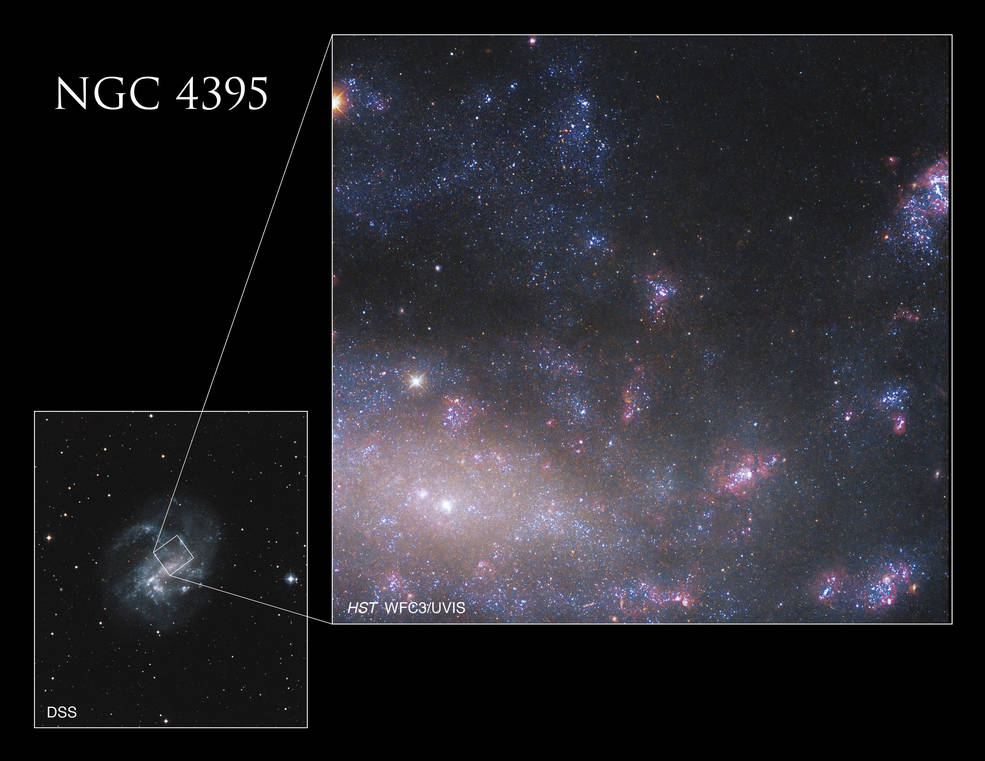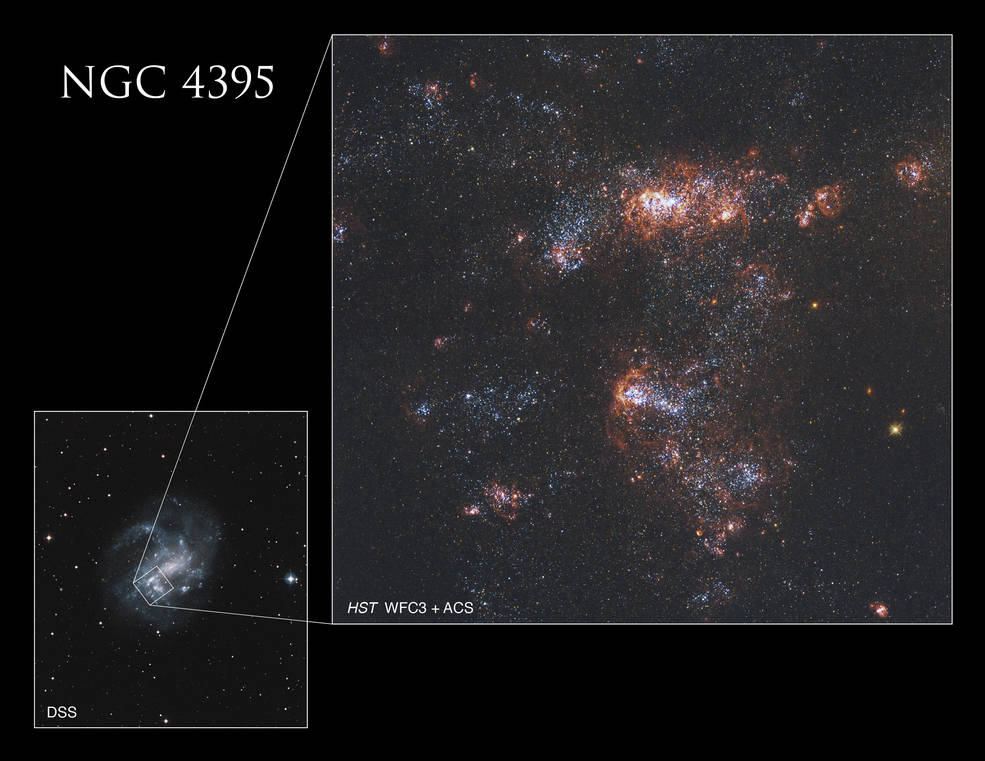Astronomers recently shared a new image captured by the Hubble Space Telescope of the galaxy NGC 4395. This relatively diffuse and dim dwarf galaxy is located just 14 million light-years from Earth.
NGC 4395 has several oddities, and this new image zooms in on the galaxy's central region to highlight just one of those quirks. NGC 4395 is different from other dwarf galaxies because it contains an actively feeding supermassive black hole at its center.
But this black hole is considered one of the lowest mass supermassive holes ever detected, an oxymoron if there ever was one.
The black hole has "merely" 10,000 times the mass of the Sun, which would make it as much as 100 times smaller than others of its kind. The black hole is only detectable because of the radiation blasting out of the galaxy's center, this bright region in the lower left of this image.
NGC 4395 wears several different hats. It is a dwarf galaxy because of its small size. It is considered a spiral galaxy because of its diffuse but definite spiral arms. However, it's also considered a Seyfert galaxy because it contains an active galactic nuclei (AGN), a small region at its center that is brighter than can be explained by the stellar population alone.
But again, this AGN -- powered by the supermassive black hole -- is one of the dimmest AGNs out there.. It's classified as a Seyfert galaxy and not a full-blown quasar because the amount of radiation from the black hole doesn't overwhelm the rest of the galaxy.
NGC 4395 is also unique among Seyfert galaxies due to its lack of galactic bulge, the tightly packed group of stars often found at the center of a galaxy. Astronomers say it could be that the black hole "ate" most of the stars in the bulge, and doesn't have much more food within reach. That would keep the black hole from growing.
Here's another Hubble image of NCG 4395 that zooms into one of the galaxy's diffuse spiral arms:
Source: NASA
 Universe Today
Universe Today


